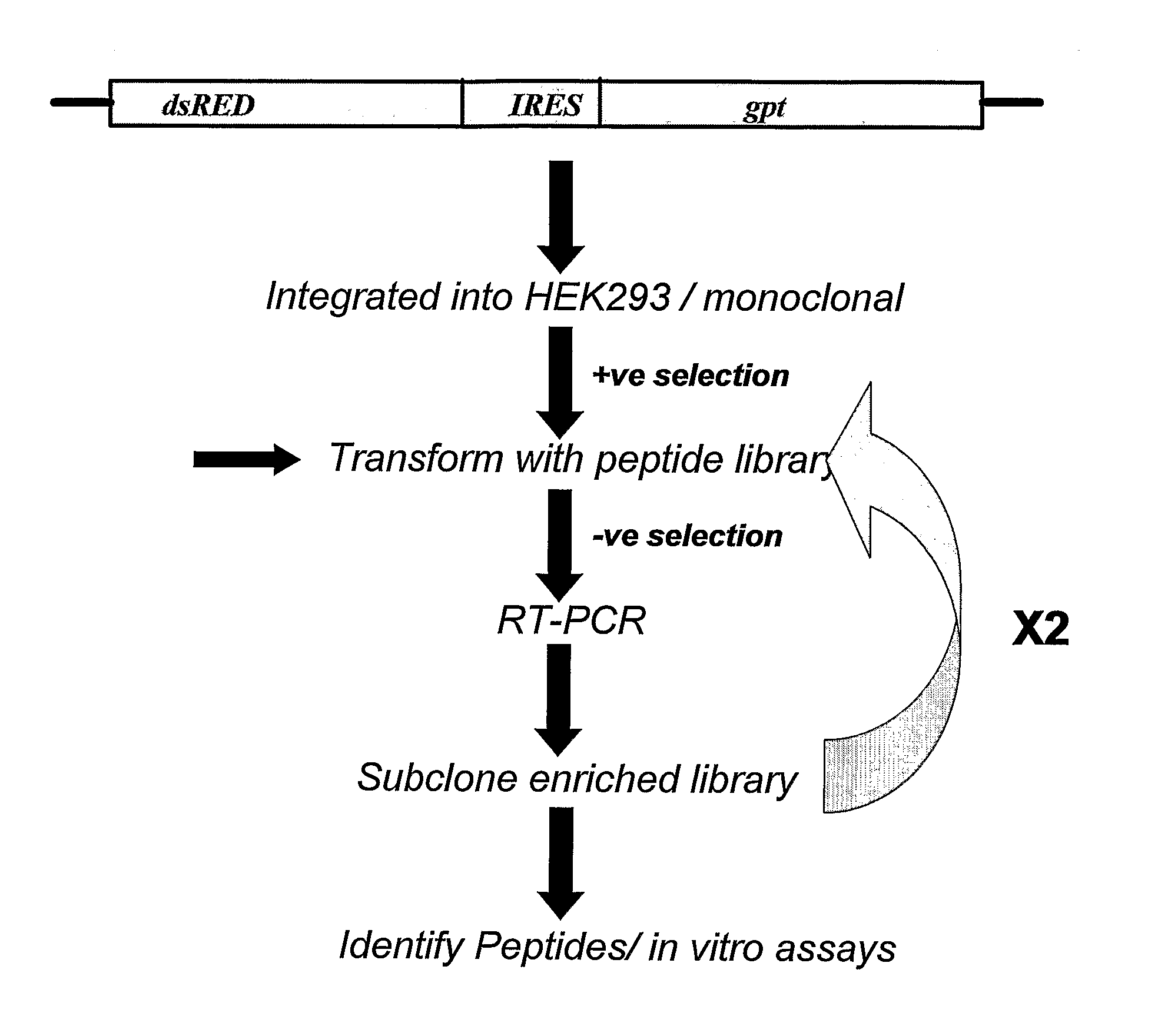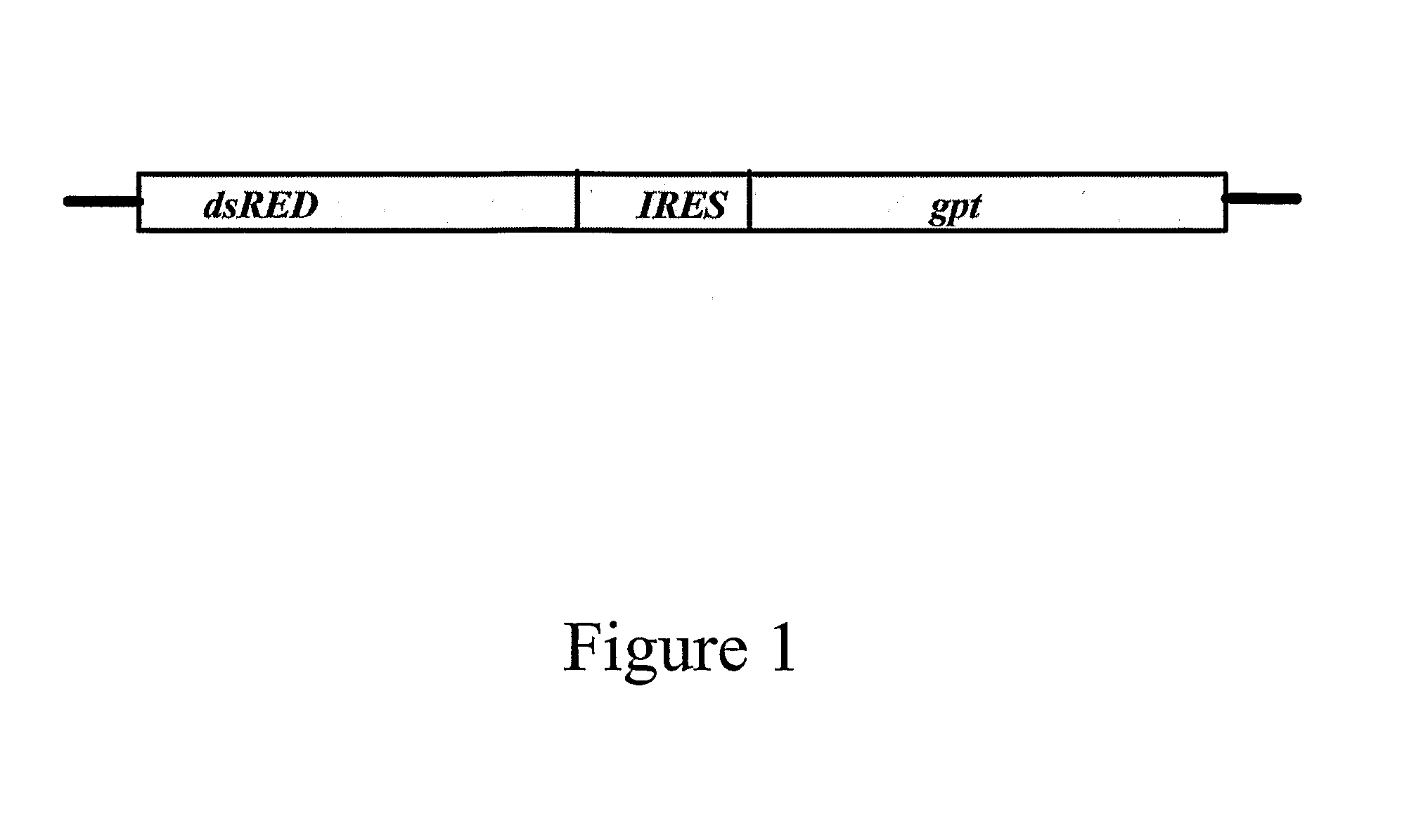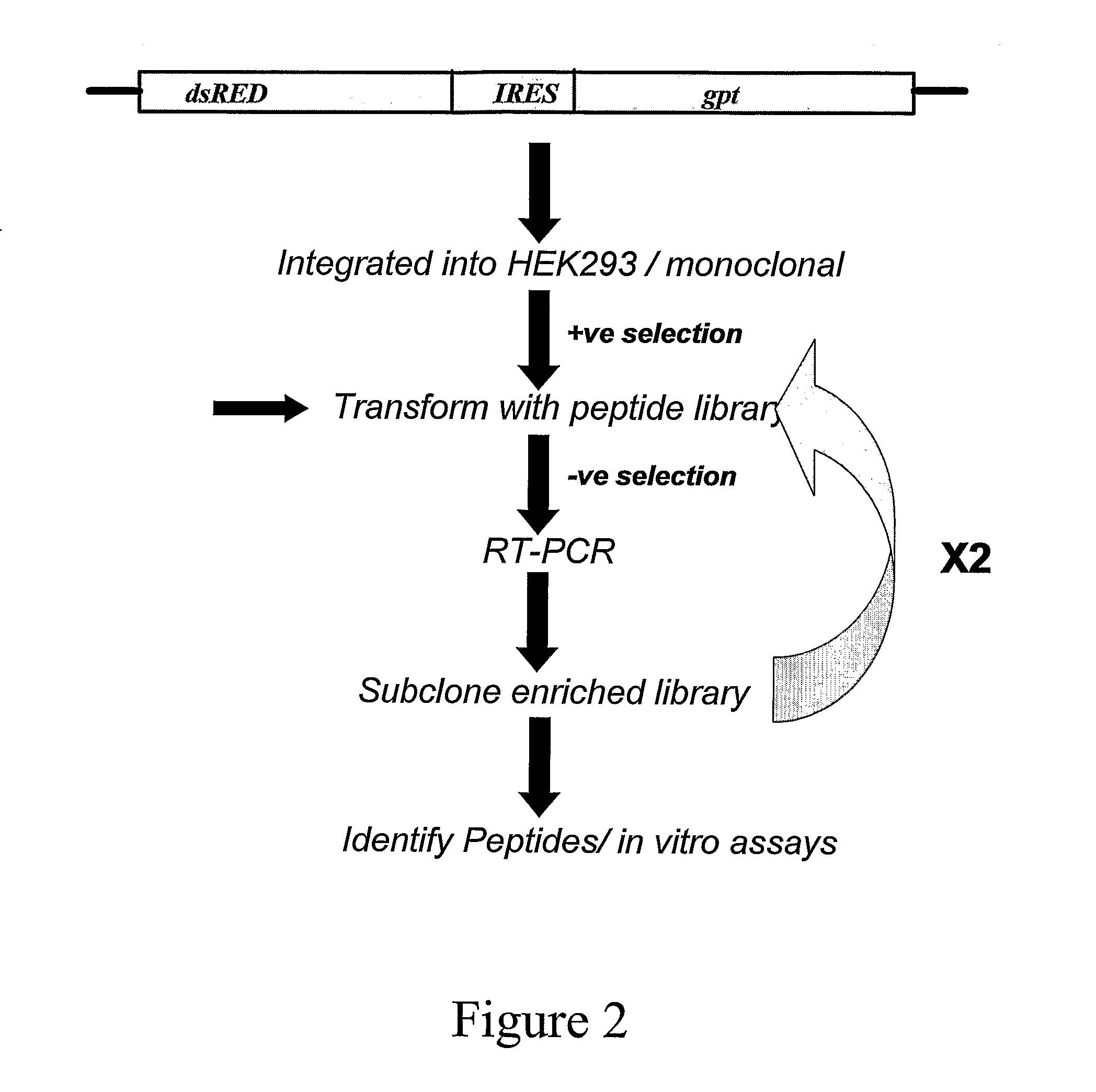Isolation of Inhibitors of IRES-Mediated Translation
- Summary
- Abstract
- Description
- Claims
- Application Information
AI Technical Summary
Benefits of technology
Problems solved by technology
Method used
Image
Examples
example 1
An Assay for Determining Inhibitors of HCV IRES-Mediated Translation
1.1 Vector Construction
[0455]A vector comprising the fluorescent marker dsRED2 the expression of which is operably under the control of the CMV promoter and the E. coli gpt gene operably linked to a HCV IRES comprising the nucleotide sequence set forth in SEQ ID NO: 6 was produced to determine an inhibitor of HCV IRES-mediated translation.
[0456]Nucleic acids encoding dsRED2 was excised from the commercially available vector dsREDII (Clontech) and cloned into the multiple cloning site of the pcDNA3 expression vector (Invitrogen). The HCV IRES was amplified using PCR from a plasmid and cloned downstream of the dsRED2 encoding nucleic acid. The E. coli gpt gene lacking an ATG start codon was cloned in-frame and downstream of the HCV IRES and males use of the ATG start codon in the IRES.
[0457]The resulting vector, designated pcDNA3-red-HCVIRES-gpt, was then sequenced in both the 5′ and 3′ directions to ensure the correc...
example 2
Identifying Peptides Inhibitors of HCV IRES-Mediated Translation
[0461]A library of nucleic acid fragments from biodiverse gene fragments cloned into the expression vector pYTB3 (Phylogica Limited, Perth, Australia) was produced essentially as described in published International Application No. PCT / AU2004 / 000214. The nucleic acid fragments in the vector were amplified by PCR using a first primer capable of hybridizing to the sequence encoding the FLAG tag in the vector and a second capable of hybridizing to a sequence in the vector 3′ to the insertion site of the nucleic acid fragment. The resulting amplicons were then cloned into the pcDNA3 vector (invitrogen Corporation) to produce pcDNA3-peptide.
[0462]The resulting library is estimated to comprise approximately 1 million different nucleic acid fragments.
[0463]To identify peptide inhibitors of HCV-mediated translation, the cells described in Example 1.3 were transiently transfected with the pcDNA3-peptide vector using lipofectamin...
example 3
Specific Inhibitors of HCV IRES-Mediated Translation
[0471]To identify peptides capable of specifically inhibiting or reducing IRES-mediated translation a vector was produced comprising the dsRED2 gene operably under the control of a promoter and the eGFP gene operably under the control of the HCV IRES. A peptide capable of reducing expression of the eGFP gene but not the dsRED2 gene is considered to reduce IRES-mediated translation but not Cap-dependent translation.
[0472]The vector was produced essentially as described in Example 1, however eGFP encoding nucleic acid was cloned downstream of the HCV IRES in place of the E. Coli gpt gene.
[0473]Monoclonal stably transfected cells were then produced essentially as described in Example 1.
[0474]The stably transfected cell line was then transiently transfected with a vector encoding a peptide isolated in the initial screen, as described in Example 2. Cells were transfected using Lipofectamine™ (Invitrogen Corporation) essentially accordin...
PUM
| Property | Measurement | Unit |
|---|---|---|
| Angle | aaaaa | aaaaa |
| Angle | aaaaa | aaaaa |
| Composition | aaaaa | aaaaa |
Abstract
Description
Claims
Application Information
 Login to View More
Login to View More - R&D
- Intellectual Property
- Life Sciences
- Materials
- Tech Scout
- Unparalleled Data Quality
- Higher Quality Content
- 60% Fewer Hallucinations
Browse by: Latest US Patents, China's latest patents, Technical Efficacy Thesaurus, Application Domain, Technology Topic, Popular Technical Reports.
© 2025 PatSnap. All rights reserved.Legal|Privacy policy|Modern Slavery Act Transparency Statement|Sitemap|About US| Contact US: help@patsnap.com



